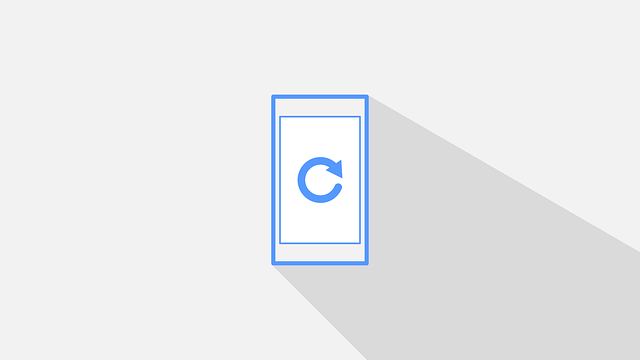How to Trade on Bybit App: Complete Mobile Trading Guide
Author: Jameson Richman Expert
Published On: 2025-11-03
Prepared by Jameson Richman and our team of experts with over a decade of experience in cryptocurrency and digital asset analysis. Learn more about us.
Learning how to trade on Bybit app is essential for traders who want the flexibility of managing positions from a smartphone. This comprehensive guide walks you through account setup, deposits, the Bybit mobile interface, order types, leverage strategies, risk management, and practical examples to trade confidently. Whether you’re trading spot, margin, or perpetual futures, you’ll find step-by-step instructions, best practices, and useful links to further resources.

Why trade on the Bybit app?
Mobile trading platforms like the Bybit app give traders real-time access to markets, fast order execution, and on-the-go monitoring. The app is optimized for speed, includes advanced charting tools, and supports derivatives such as perpetual futures, which makes it popular for active crypto traders. If you prefer to practice on multiple platforms or compare offers, you can also register with other exchanges:
Getting started: Account setup and verification
1. Download and install the app
Search for “Bybit” in the iOS App Store or Google Play Store and install the official app. Confirm you’ve installed the authentic app by checking reviews and the publisher name (Bybit Official). Always keep your app up to date for security and feature improvements.
2. Create your account
- Open the app and tap “Register”.
- Sign up with an email or mobile number and create a strong password.
- Enable two-factor authentication (2FA) for additional security—Google Authenticator is recommended.
- Complete identity verification (KYC) if you plan to increase withdrawal limits or access fiat gateways. KYC typically requires a photo of your ID and a selfie.
For details about trading signals and how they integrate with live trading, see this guide on Mastering Live Crypto Trading Signals.
Navigating the Bybit app interface
The Bybit app has a main navigation bar (commonly Home, Markets, Trade, Derivatives, Assets, and Account). Spend time familiarizing yourself with these sections:
- Markets — browse spot and derivatives markets, view top movers and trading pairs.
- Trade — execute spot orders (Market/Limit), and open margin positions.
- Derivatives — access perpetual futures for BTC/USDT and other contracts, choose leverage, and create conditional orders.
- Assets — deposit, withdraw, transfer between wallets (spot, derivatives, margin), and view balances.
- Account — settings, security, KYC, fee information, and support.

Funding your account: Deposits and transfers
To trade, deposit crypto or fiat (if supported in your region). The Bybit app provides QR codes and wallet addresses for crypto deposits. For fiat deposits, use the supported fiat channels or P2P function.
- Go to Assets > Deposit and select the asset (e.g., USDT or BTC).
- Choose the correct network (e.g., ERC-20, TRC-20, or BEP20). Sending to the wrong network can cause loss of funds.
- For instant trading, transfer funds between spot and derivatives wallets inside the Assets section.
Always confirm network compatibility and minimum deposit amounts before sending funds. For withdrawal security, whitelist wallet addresses where available.
Understanding Bybit order types (mobile)
Knowing order types is crucial for precise trade execution. The Bybit app supports:
Spot trading order types
- Market order — executed immediately at current market price. Use for quick entries/exits.
- Limit order — set a price target; the order executes only at that price or better.
- Stop-limit — combines stop and limit to trigger a limit order when the stop price is hit.
Derivatives (futures) order types
- Limit and Market — same as spot but for leveraged positions.
- Conditional orders — trigger orders (stop-loss, take-profit) when specified price conditions are met.
- Post-only — ensures order adds liquidity; won’t execute as a taker.
- Reduce-only — ensures the order only reduces or closes a position, not increase it.
Use the app’s order settings to set Leverage (perpetual contracts), margin mode (Cross vs Isolated), and order expiration where available.
How to place a trade on the Bybit app: step-by-step
Here’s a practical example of opening a BTC/USDT perpetual position on the Bybit app:
- Open the app and tap Derivatives, then choose BTCUSDT Perpetual.
- Select spot or contract type (Perpetual / Futures) and ensure you’re in the correct wallet (transfer funds if needed).
- Choose Leverage (e.g., 5x). Be cautious: higher leverage magnifies gains and losses.
- Pick order type. For instant entry, select Market. For precise price, choose Limit and set your price.
- Enter position size (in contract quantity or USDT value). The app typically shows margin required and estimated liquidation price.
- Set stop loss and take profit (conditional orders recommended). Confirm order details and swipe/tap to submit.
- Monitor the position in Positions tab; adjust SL/TP or close manually when desired.
Example: With 5x leverage, a $200 margin lets you open approximately $1,000 notional exposure. A 10% adverse move could wipe out significant margin—always calculate position size carefully.

Leverage, margin modes, and liquidation
Leverage allows you to control larger positions with less capital, but it increases risk. Key terms:
- Cross margin — shares margin across positions to reduce likelihood of liquidation, but exposes all funds in the margin wallet.
- Isolated margin — margin is limited to that position only; safer for risk management per-trade.
- Liquidation price — the price at which Bybit automatically closes your position to prevent negative balance. The app shows this estimate before opening a trade.
Tip: Use lower leverage if you’re new or if the asset is highly volatile. Consider reading about volatility and market structure on authoritative sources such as Wikipedia’s article on cryptocurrency.
Charting and technical analysis on Bybit app
The Bybit app integrates advanced charts with indicators, drawing tools, and timeframes. Steps to use charts:
- From a trading pair, tap the chart area to expand.
- Add indicators (Moving Averages, RSI, MACD, Bollinger Bands) to confirm entries and exits.
- Use trendlines, Fibonacci retracements, and support/resistance lines to set logical stop-loss and take-profit levels.
If you prefer TradingView charts or want to learn how to use them for free and integrate with your strategy, read this complete guide to TradingView charts: Can I use TradingView charts for free?
Practical trading strategies for the Bybit app
Below are practical strategies suitable for mobile trading. Each includes execution and risk-management suggestions:
1. Breakout trading
- Identify consolidation ranges on the chart (support and resistance).
- Place a buy stop a few ticks above resistance (or sell stop below support) with a calculated stop loss below the breakout candle.
- Use a risk-reward ratio of at least 1:2 and avoid chasing weak breakouts.
2. Trend-following (moving average crossover)
- Apply short-term (e.g., 20 EMA) and long-term (e.g., 50 EMA) moving averages.
- Enter when the short EMA crosses the long EMA and volume supports the move.
- Set trailing stop loss to lock in profits as the trend continues.
3. Mean reversion / scalping
- Use RSI or Bollinger Bands to find overbought/oversold conditions.
- Enter small positions with tight stop losses and quick profit targets.
- Scalping works well on lower time frames—ensure low latency and fee awareness.

Risk management best practices
Risk management distinguishes successful traders. Keep these rules:
- Never risk more than a small percentage of your capital per trade (1–2% is common).
- Use stop-loss orders for every trade and place them logically, not arbitrarily.
- Be aware of funding rates on perpetual contracts—these can add costs for holding positions long-term.
- Diversify across assets and timeframes; avoid overleveraging multiple correlated positions.
For practical guidance on using trading signals safely and avoiding scams, see the signals guide here: Mastering Live Crypto Trading Signals.
Fees, funding rates, and costs
Trading costs impact profitability. Key fee types:
- Trading fees — maker/taker fees applied per order; check the Bybit fee schedule in-app or on Bybit’s official help pages.
- Funding fees — periodic payments between long and short holders for perpetual contracts.
- Deposit/withdrawal fees — network fees apply to crypto withdrawals.
Always reference Bybit’s official fee page for up-to-date details. Also consider slippage in volatile markets when using market orders.
Using conditional orders effectively
Conditional orders let you automate entries and exits. Common uses include:
- Placing stop-loss orders below support to protect against sudden drops.
- Setting take-profit levels to lock in gains at predefined price points.
- Using bracket orders (if available) to set both stop-loss and take-profit simultaneously.

Monitoring positions and alerts
Use the app’s notification system to receive price alerts, order fills, funding reminders, and margin calls. Proactive monitoring is crucial—set alerts for key levels and for funding rate windows when you’re long or short on perpetuals.
Advanced features: copy trading, bots, and API
Bybit and many other exchanges provide advanced features:
- Copy trading — follow experienced traders and copy their strategies (understand performance history and risks before copying).
- Trading bots and grid strategies — automate trades by setting ranges and rebalancing rules. Automation can reduce emotional trading but requires parameter optimization.
- API access — for custom bot integration and algorithmic trading. Protect your API keys and restrict permissions (e.g., disable withdrawals).
Staying informed: news, market data, and token events
Cryptocurrency markets are sensitive to news and on-chain events. Use reliable sources for updates and price analysis. For example, you can track token-specific news and live price updates like XRP coverage here: XRP price, live news and analysis.
In addition, consult established sources such as CoinMarketCap for market caps and CoinGecko for token metrics, and the Bybit blog for platform-specific announcements.

Common beginner mistakes and how to avoid them
- Overleveraging — avoid using max leverage; it increases liquidation risk.
- Ignoring fees — frequent trading can eat profits through fees and funding payments.
- Trading without a plan — always define entry, stop loss, and take profit before entering trades.
- Chasing pumps — buy pressure can reverse quickly; use measured entries or wait for pullbacks.
Troubleshooting and support
If you encounter issues with the app—login problems, deposit not credited, or trade execution errors—use Bybit’s in-app support or help center. Keep transaction IDs and screenshots ready for faster resolution. For trustable protocol and regulatory information, refer to government or educational resources when needed.
Checklist before placing any trade on Bybit app
- Confirm you’re on the official Bybit app and logged into the correct account.
- Verify wallet balance and that funds are in the appropriate wallet (Spot vs Derivatives).
- Set leverage and margin mode intentionally (Isolated vs Cross).
- Use clear stop-loss and take-profit levels.
- Check funding rate timing for perpetual contracts.
- Confirm order size matches your risk tolerance (1–2% of capital per trade preferred).
- Enable 2FA and consider address whitelisting for withdrawals.

Practical example trade — step-by-step case study
Scenario: You believe ETH will rally after breaking resistance at $3,200. You have $1,000 capital and want to use 3x leverage.
- Move $1,000 into your derivatives wallet.
- Choose ETHUSDT Perpetual; set leverage to 3x. Effective exposure = $3,000.
- Place a limit buy order at $3,210 (slightly above resistance to confirm momentum).
- Set stop-loss at $3,000 (a 6% downside from entry). Risk per trade = 6% of $3,000 = $180 (which is 18% of your $1,000 margin—higher than ideal; reduce size or leverage if you want risk under 2%).
- Set take-profit at $3,480 (approx. 8% upside) giving a risk/reward of ~1:1.3.
- Monitor news, funding, and price action; adjust trailing stop if price trends favorably.
Note: The above example is illustrative, not financial advice. Always calculate risk separately.
Regulatory and tax considerations
Crypto regulations and tax rules vary by jurisdiction. Keep accurate records of trades, P&L, and withdrawals. Consult a tax professional for reporting obligations. Official government tax authority websites (e.g., the IRS in the US) provide guidelines on reporting crypto transactions.
Further learning and resources
To deepen your skills, combine practical trading with educational resources:
- Official Bybit tutorials and help center for app-specific guidance (search Bybit Help Center within the app).
- Technical analysis courses and books about trading psychology.
- Community and social platforms for trade ideas—vet sources carefully.
For additional reading on live signals and how to integrate them into your strategy, see this comprehensive piece on crypto trading signals: Mastering Live Crypto Trading Signals. And for market-specific updates such as XRP coverage, this article offers live news and trading tips: XRP Price — Live News & How to Trade.

Security best practices
- Always enable 2FA and use a hardware security key where supported.
- Use unique, strong passwords and a reputable password manager.
- Keep your device OS and the Bybit app updated to patch vulnerabilities.
- Do not share private keys, recovery phrases, or API secret keys.
- Beware of phishing sites—confirm domain names and use bookmarks for critical pages.
Conclusion: Confident mobile trading with discipline
Mastering how to trade on Bybit app combines technical knowledge, disciplined risk management, and ongoing learning. The app provides powerful tools for spot and derivatives trading, but success depends on how you plan and manage risk. Use demo accounts or start small, maintain a trading journal, and continuously refine your strategy.
Additional reference materials and tools can help: integrate charting tools like TradingView (guide: Can I use TradingView charts for free?) and stay informed on market-moving events (like token news for XRP: XRP price live updates).
Disclaimer: This article is educational and not financial advice. Cryptocurrency trading carries a high level of risk and may not be suitable for every investor. Consult a licensed financial advisor for personalized advice.